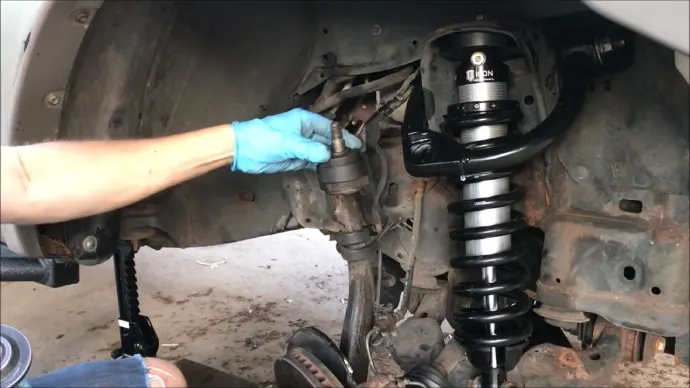Last Updated on March 14, 2023
Lift kits are designed to change the look of a vehicle and increase its off-road capabilities. Although they can offer considerable benefits, they can also have an adverse effect on ball joints and other key components.
When lift kits are installed with a greater angle and pressure than intended, this can cause increased wear and tear on the ball joints. Improperly installed lift kits increase the angle and additional pressure applied to ball joints. This can cause them to wear out quicker than normal and, in extreme cases, fail altogether.
Today we will discuss how a lift kit affects ball joints and other related parts and what you should do if you think your lift kit is causing them to malfunction. We’ll also provide tips for keeping your ball joints in top shape.
So read along to learn more about this fascinating topic and how to ensure long-lasting performance from your suspension system.
How Does Lift Kit Affect Ball Joints and Such: In-Depth
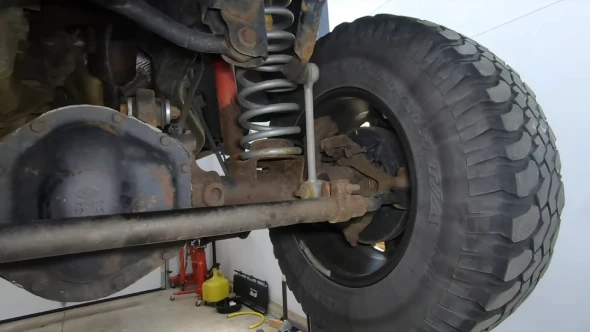
When a lift kit is installed, it can affect the vehicle’s ball joints differently. Ball joints are an essential component of a vehicle’s suspension system. They connect the steering knuckles to the control arms, allowing the wheels to move up and down as the vehicle travels over uneven terrain.
One of the ways that lift kits can affect ball joints is by changing the angle at which they operate. When a suspension lift kit is installed, it can cause the upper and lower control arms to rotate upward, which changes the angle of the ball joints.
This change in angle puts extra pressure on the upper ball joints and can cause them to wear more quickly, as they no longer operate within their designed range of motion. Over time, this can cause the ball joints to fail and require replacement.
Another way that suspension lift kits can stress ball joints is by increasing the amount of stress placed on them. When a lift kit is mounted, it can increase the distance between the wheels and the vehicle’s frame.
This increase in distance puts more stress on the ball joints, as they are now supporting more weight and experiencing increased forces as the vehicle travels over rough terrain. This can also cause the ball joints to wear quickly and require replacement.
In addition to affecting ball joints, lift kits can impact other components of a vehicle’s suspension system. For example, a lift kit can put more stress on the shocks and struts, as they are now working to support a vehicle that is higher off the ground. This can cause these components to wear more quickly and require replacement.
Lastly, it’s imperative to note that not all suspension lift kits are created equal. Some lift kits are designed to minimize the impact on ball joints and chassis components, while others are not. Your car’s specific make and model must be considered when choosing a lift kit and installing it by a pro.
How Do I Know If My Ball Joints are Going Bad on a Lifted Vehicle?
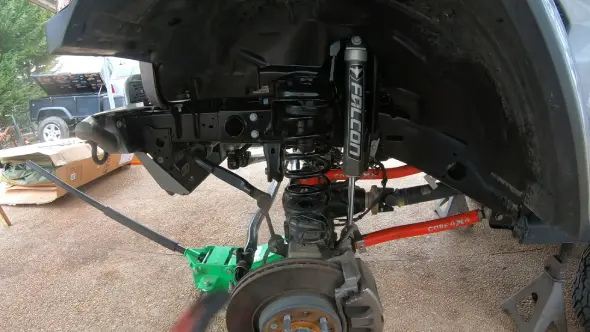
The ball joints in a lifted vehicle are an essential part of its power steering and suspension system, and keeping them in good condition is essential. Eventually, these ball joints can wear out or become loose, affecting your car’s performance and safety.
Here are some common signs that your lifted vehicle ball joints are going bad:
Listen for Unusual Noises
Listening to strange noises that may indicate trouble with the ball joints is essential when driving a lifted vehicle.
Unusual popping or clicking sounds while turning indicate worn-out or loose ball joints and increased vibration when accelerating or braking. These symptoms mean you must get your car checked out by a professional mechanic.
Check for Uneven Tires Wear
Uneven tire wear can indicate ball joint failure in any car but is especially critical in a lifted vehicle due to its higher center of gravity and longer suspension components.
Pay close attention to the tread on each tire. Excessive wear on one side of the tire could be caused by bad ball joints causing an uneven weight distribution across all four tires. An alignment check should also rule out other potential causes, such as improper wheel alignment or worn suspension parts.
Look for Leaking Grease
Over time, grease within the ball joint housing can begin to leak out due to natural wear and tear and age-related breakdowns in materials used within the part itself or its lubricant seals.
If you notice leaking grease around the area between your tires and wheel wells, this could indicate that your ball joints need replacing immediately before further damage occurs.
Pay Attention to the Alignment
As mentioned earlier, bad ball joints can cause misalignment issues if left unaddressed for too long. After performing an alignment check, if your steering wheel isn’t centered when driving straight down the road, your ball joints might be failing and need replacing.
Also, if you have trouble controlling your vehicle during turns and sharp corners at higher speeds than normal, you might need a full inspection from a qualified mechanic. They’ll look for suspension problems, like bad wheel bearings and torn CV boots, that could cause problems with your ball joints.
Pay Attention to Steering and Handling
When assessing the condition of your ball joints on the lifted vehicle, one of the most important things to look out for is any changes in how it handles compared to normal driving conditions.
If you’ve been driving your vehicle for some time without noticing any significant differences, then chances are that the ball joints are in working order. But subtle differences such as stiffer steering or rougher ride may indicate potential problems with the ball joints due to wear or deterioration over time.
Look for Excessive Steering Vibration
In addition to changes in steering and handling, worn or damaged ball joints can produce excessive vibrations when turning the wheel at low speeds or when driving at higher speeds, especially if you have large tires fitted on your car.
If you feel excessive vibration while turning your wheels, have someone inspect your car’s suspension system for possible damage or wear caused by loose or faulty ball joints.
Consider the Driving Conditions
Another key indicator of potential ball joint issues is driving conditions that impose greater stress on the parts of your suspension system than usual.
For example, if you take sharp turns frequently, such as during off-roading activities, or drive over bumps or rough terrain more often than usual, these conditions can cause accelerated wear and tear on your car’s suspension system components, including its ball joint assemblies.
As such, consider how often you drive under such conditions when assessing potentially faulty ball joints on a lifted vehicle.
Inspect the Ball Joints Visually
Visual inspection of your car’s ball joint assemblies can also effectively determine their condition and overall health. But this method requires a qualified mechanic with experience diagnosing steering and suspension issues.
It involves getting underneath the car and looking for signs of wear or damage from low angles where faults cannot be easily seen with the naked eye while standing beside it.
How Long Do Ball Joints Last on Lifted Trucks?
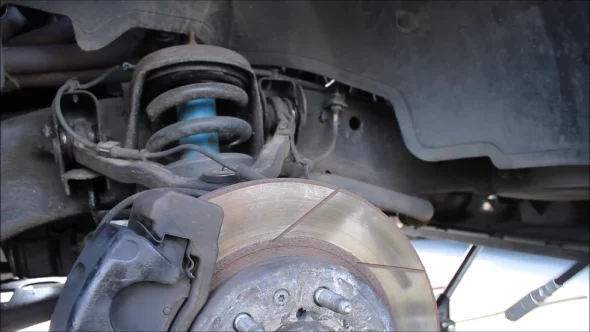
Generally, a properly maintained and installed suspension lift kit with quality parts should allow your ball joints to last up to 70,000 miles or more without major issues. If you’re driving a lifted truck often used for off-roading, inspecting your ball joints every 12,000 miles or so is best.
But, if a truck has been lifted with a poorly designed lift kit or if the installation was done incorrectly, this can significantly reduce the lifespan of ball joints and other components. Worn-out ball joints can cause excessive vibration and noise when driving and uneven tire wear due to misalignment.
These issues can lead to more serious problems, such as brake failure and suspension damage, if left unchecked. To ensure proper performance and longevity of your vehicle’s ball joints, a qualified technician should inspect them every 6 months or 12,000 miles (whichever comes first).
How Do You Prevent Lift Kits From Putting Extra Pressure on Ball Joints?
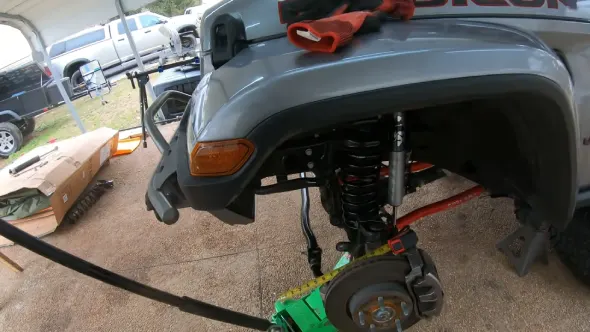
Ball joints shouldn’t be put under extra pressure by a lift kit, so make sure they’re not. This can be done in several ways, such as:
Choose the Right Lift Kit
Choosing the right lift kit is the first step in preventing extra pressure from being put on ball joints. The best way to do this is to look for kits explicitly designed for your vehicle’s make, model, and year of production.
This ensures the correct fitment and helps keep the suspension geometry aligned with factory specifications. Also, research any additional modifications or parts that may help with installation and performance when selecting a lift kit.
Use High-Quality Parts
Using high-quality parts is essential when working with a lift kit. It is important to look for quality manufacturers with extensive experience producing lift kits for vehicles like yours.
Be sure to purchase genuine replacement parts to ensure compatibility with your specific kit and vehicle. Doing so will reduce the chances of encountering fitment issues or premature wear on ball joints and other suspension components over time.
Use Adjustable Control Arms
Adjustable control arms can also prevent extra pressure from being placed on ball joints when installing a lift kit. These arms allow you to adjust the caster angle, camber angle, and scrub radius of your wheels based on the new suspension setup while keeping them within factory specs.
Adjustable arms also allow improved handling performance depending on the manufacturer’s design and construction materials.
Install a Steering Stabilizer
Installing a steering stabilizer can help reduce unwanted oscillations or vibrations during use, which could add extra stress to ball joints over time. Stabilizers dampen disruptive forces acting against the front end of your car while also improving response time when turning at high speeds or off-roading.
Various types are available based on the application, so select one suited for your needs before purchasing one separately or as part of a pre-packaged lift kit solution.
Seek Professional Installation
Finally, it is highly recommended that you seek professional installation if you are unfamiliar with performing suspension modification work yourself due to its complexity and potential safety risk associated with doing it incorrectly.
Experienced technicians know precisely how each component works together and the proper torque ratings for all fasteners. Most first-time installers may not always pay attention to ensuring everything fits together perfectly without compromising safety or performance expectations once completed.
Maximize Your Style & Off-Road Capability: Choose the Right Lift Kit
Although lift kits can effectively increase a vehicle’s style and off-road capability, not all kits are created equal. The increased angle and pressure can wear them down quickly or even fail in extreme cases.
Choosing a kit compatible with your vehicle’s specifications ensures safe operation and less wear on your ball joints. By doing so, you will be able to maximize the performance of your suspension system while avoiding potential damage or failure.
So if you’re considering installing a lift kit in your car or truck, ensure you understand what it could have before doing it. Get the best parts and have them installed by an expert so you can get all the benefits without having any problems.
